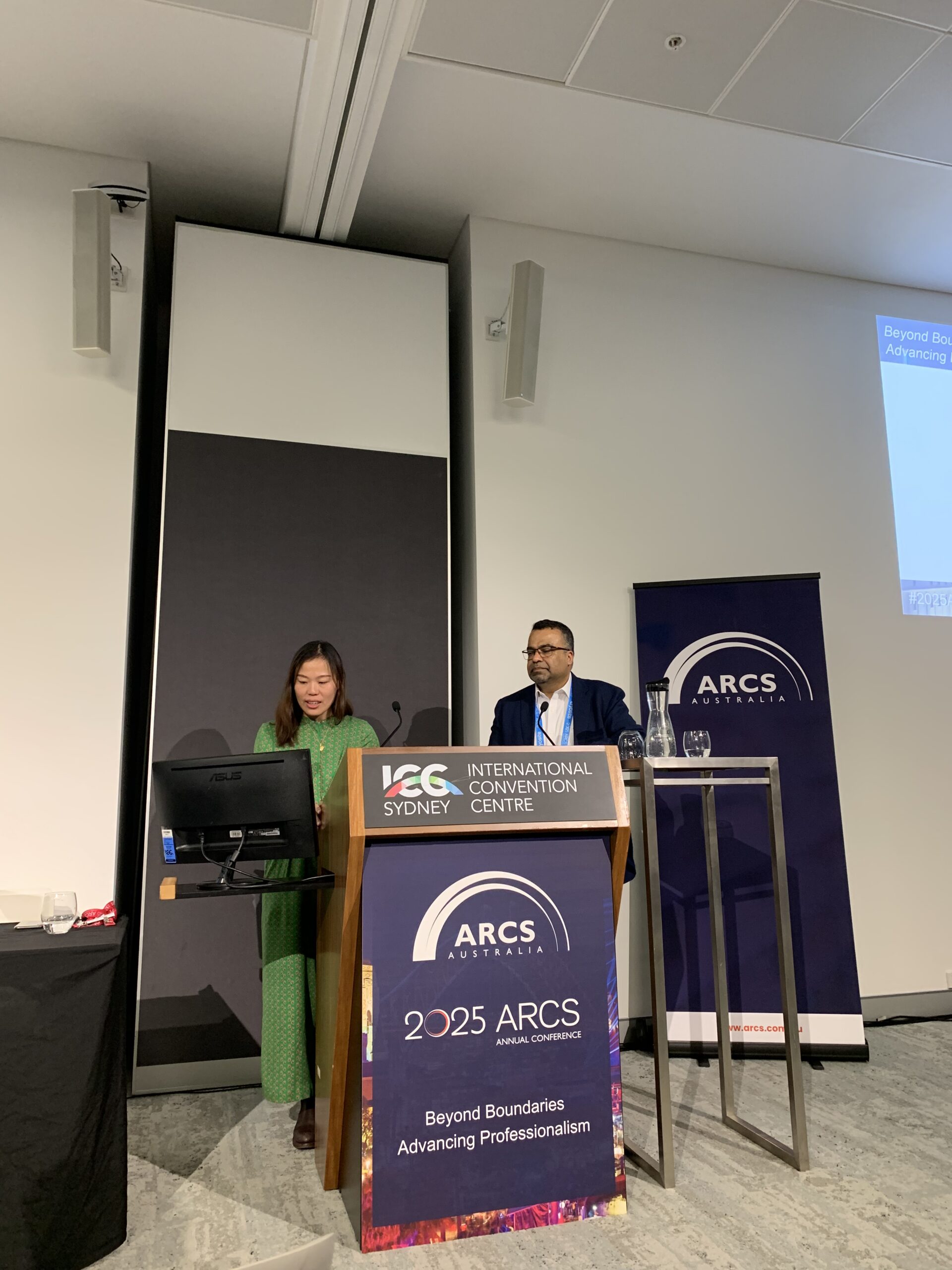At the 2025 ARCS Australia Conference, Wenna Zhang, Head of Medical Information at Commercial Eyes, co-presented a session with Sudeep Mavila from Pfizer. Together, they explored a pivotal question: What lessons has the COVID-19 pandemic taught us, and what enduring impact has it had on the role and evolution of Medical Information?
Reflecting on the early days of COVID-19—lockdowns, social distancing, and empty supermarket shelves—the session highlighted how the Medical Information landscape rapidly adapted. In a time of global uncertainty, MI has become a critical link, evolving how information is delivered and accessed, and setting new standards for responsiveness and digital communication.
“The pandemic didn’t just disrupt how we work—it redefined the expectations placed on Medical Information,” said Wenna Zhang, Head of Medical Information at Commercial Eyes. “We had to become faster, more agile, and truly patient- and HCP-centric overnight.”
A Major Accelerator Amidst Disruption
As challenging as it was, the pandemic became a significant accelerator. Technology adoption surged, with over 97% of general practices in Australia offering teleconsults by mid-2020, a service barely used before COVID-19. This transformed how people engaged with healthcare, and how medical services were delivered. In MI, this shift was felt deeply: we moved from being seen as just a supportive function to becoming a strategic partner, providing timely and critical information under immense pressure.
Adapting to a New Reality
During lockdowns, traditional communication channels broke down. Doctors couldn’t see their sales representatives, and patients couldn’t easily access their GPs, pharmacists, or specialists. As a result, HCPs and patients increasingly turned to the MI team for accurate, fast, and trusted information. This led to an astonishing surge in demand.
“We had to meet people where they were—digitally, emotionally, and intellectually,” Wenna noted. “That meant simplifying complex data, delivering it across new platforms, and doing it all with empathy.”
Shifting Expectations
It wasn’t just about more inquiries; expectations also changed. People wanted answers that were:
- Instant;
- Bite – sized;
- Digital First;
- Availability beyond the typical 9-to-5.
Medical Information had to shift to an on-demand, self-serve, trusted, and tech-savvy model.
A Lasting Shift, not a Temporary Spike
Intriguingly, the increase in inquiries wasn’t just a temporary pandemic spike. Enquiries have continued to climb year after year, even into 2025. This clearly demonstrates a lasting shift in how people engage with Medical Information.
The Future is Omnichannel and Proactive
The future of MI means meeting customers where they are, whether by email, phone, chat, web portals, or self-serve tools. The goal is to provide not just medical content, but convenience, clarity, and trust. MI departments are sitting on a “treasure trove” of real-world data from every inquiry handled. The challenge is to convert this data into insights and, more importantly, turn those insights into action, moving from a reactive to a truly proactive model, predicting the next question or unmet need.
Medical Information is no longer just a support service- it’s a strategic partner driving real-time healthcare communication. It has become a forward-looking, evolving force in the pharmaceutical industry. It has been concluded as one of the final remarks at the conference. We’re only just beginning to unlock its full potential.

